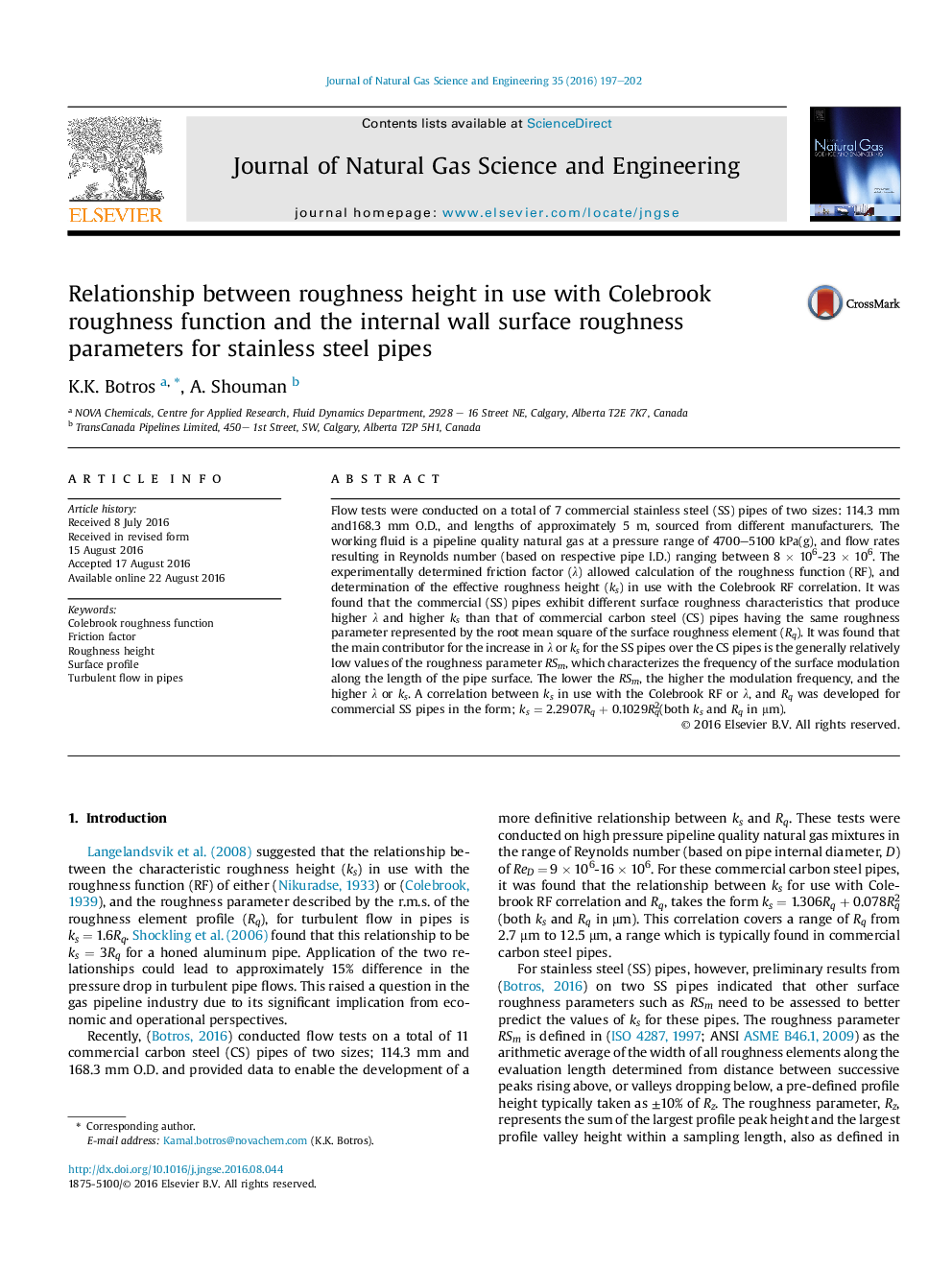| کد مقاله | کد نشریه | سال انتشار | مقاله انگلیسی | نسخه تمام متن |
|---|---|---|---|---|
| 1757014 | 1399419 | 2016 | 6 صفحه PDF | دانلود رایگان |
• Results of flow tests on SS pipes with high pressure natural gas.
• Examination of the resulting Colebrook roughness function and friction factors.
• Relationship between Colebrook roughness parameter with and surface profile rms.
• Comparison with correlation for flows in carbon steel pipes.
Flow tests were conducted on a total of 7 commercial stainless steel (SS) pipes of two sizes: 114.3 mm and168.3 mm O.D., and lengths of approximately 5 m, sourced from different manufacturers. The working fluid is a pipeline quality natural gas at a pressure range of 4700–5100 kPa(g), and flow rates resulting in Reynolds number (based on respective pipe I.D.) ranging between 8 × 106-23 × 106. The experimentally determined friction factor (λ) allowed calculation of the roughness function (RF), and determination of the effective roughness height (ks) in use with the Colebrook RF correlation. It was found that the commercial (SS) pipes exhibit different surface roughness characteristics that produce higher λ and higher ks than that of commercial carbon steel (CS) pipes having the same roughness parameter represented by the root mean square of the surface roughness element (Rq). It was found that the main contributor for the increase in λ or ks for the SS pipes over the CS pipes is the generally relatively low values of the roughness parameter RSm, which characterizes the frequency of the surface modulation along the length of the pipe surface. The lower the RSm, the higher the modulation frequency, and the higher λ or ks. A correlation between ks in use with the Colebrook RF or λ, and Rq was developed for commercial SS pipes in the form; ks = 2.2907Rq + 0.1029Rq2(both ks and Rq in μm).
Journal: Journal of Natural Gas Science and Engineering - Volume 35, Part A, September 2016, Pages 197–202
